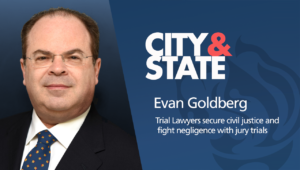How to Select Jury Members – Jury Selection
Selecting a Good Jury Takes Time 1 – Even the most accomplished trial lawyer approaches jury selection with trepidation. With considerable time and expense invested in a case, not to mention a client’s rights being at stake, so much depends on a system which is utterly random and rigged with obstacles. It starts with citizens getting summonses in the mail. Before appearing in court, they often bemoan their plight while reading inflammatory headlines containing propaganda on issues of the day. Then, once in court, they are subjected to questioning by attorneys who are not satisfied with an assurance of fairness, but want to actually explore the factors which might bear on their decision making. “What a waste of time,” groans the captive juror. After all, from what’s already been said, it’s clear who should win the case, he thinks. Even so, “I can still listen to the evidence and be fair.”
Relief then comes for the inconvenienced citizen with an announcement that each side will have fifteen minutes per round to question the panel of thirty jurors and that the case will be starting at 2 o’clock. Good! Now there won’t be any time to dig into deeply seeded biases and reservations which, to the jurors, are synonymous with their truth.
As preposterous as this appears, trial lawyers have frequently dealt with such a scenario, but hopefully no longer. Indeed, arbitrarily imposed time limits coupled with perceptions resulting from either personal experiences or a media driven nation serve to cripple the legitimacy of the process. We therefore applaud the actions of the Office of Court Administration in releasing their new booklet Implementing New York’s Civil Voir Dire Law and Rules (available on OCA’s website) and in creating a hotline to deal with questions of interpretation or for the reporting of non-compliance.
While the full text of the booklet is beyond the scope of this article, the OCA includes an admonition on time limits, with the suggested practice being an initial two to three hour voir dire, with discretionary status reports suggested thereafter. To the extent that more time is required, the Trial Lawyers Section unequivocally states that any practice impeding thoughtful and unfettered questioning of a potential juror’s viewpoints is anathema and must not be countenanced. And if jury selection takes longer than what a citizen thinks is appropriate, we submit that the trial bar knows better and that securing a fair trial for litigants is time well spent.
Voir Dire is both an art and a process and, indisputably, an important part of a trial. A detailed, time consuming approach is often essential. While no one is desirous of never-ending jury selection, the checks inherent in the adversarial system serve as a sufficient safeguard to ensure good faith practices.
Detailed exploration of biases would serve little purpose if a successful challenge for cause could not be brought when appropriate and placed on the record at the time requested when the situation can be properly explored and the remedy fashioned. To allow an attorney to make a record at a later time, in the assigned trial part, renders the remedy illusory. Once assigned to a trial part is no remedy at all, as opposed to later in a trial part when the remedies afforded from “making a record,” especially in civil cases, are illusory. Moreover, to rehabilitate a tainted juror with a catch all inquiry as to whether they could be fair and follow the law is contrary to the goal of having civic-minded, impartial jurors. Most are reluctant to admit that they can’t be fair and won’t follow the law. The pertinent inquiry runs deeper, with nothing less than justice as the sought outcome.
* By Evan Goldberg, Esq., Chair, NYSBA Trial Lawyers Section

